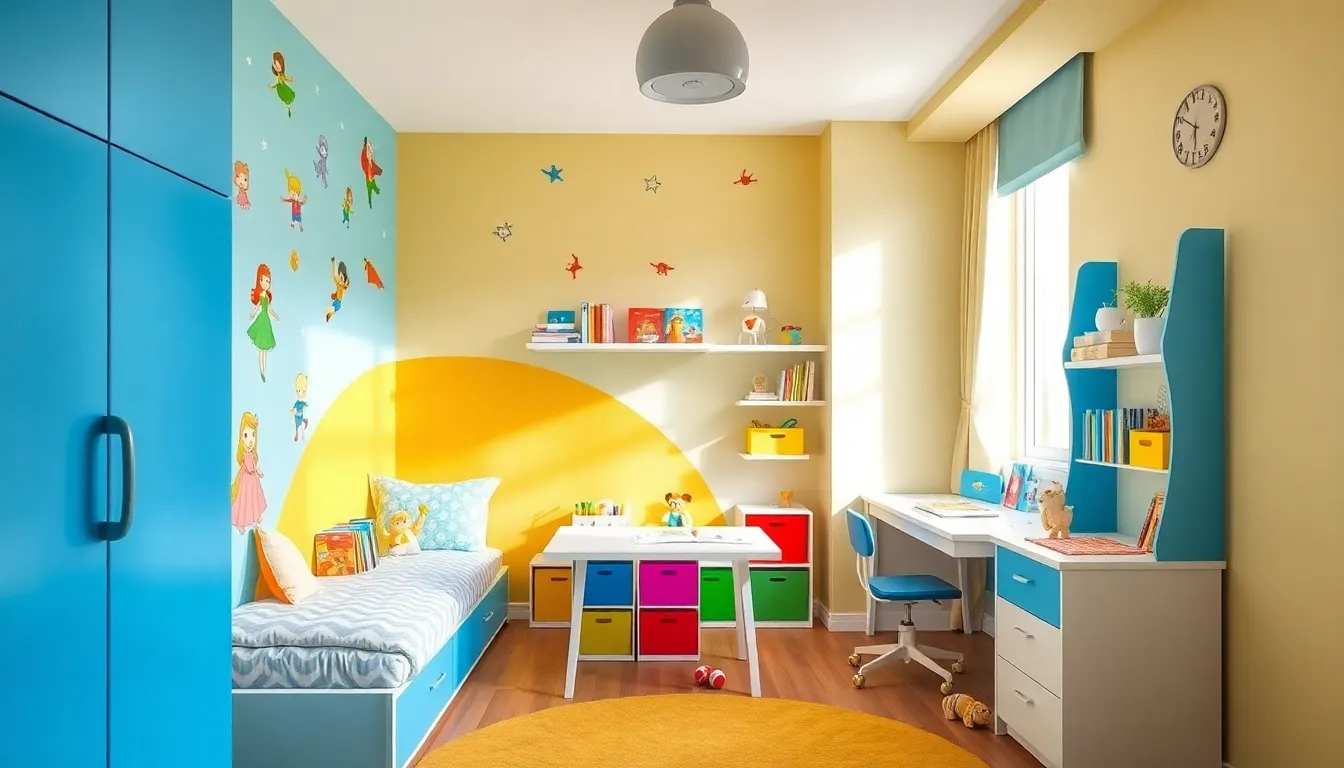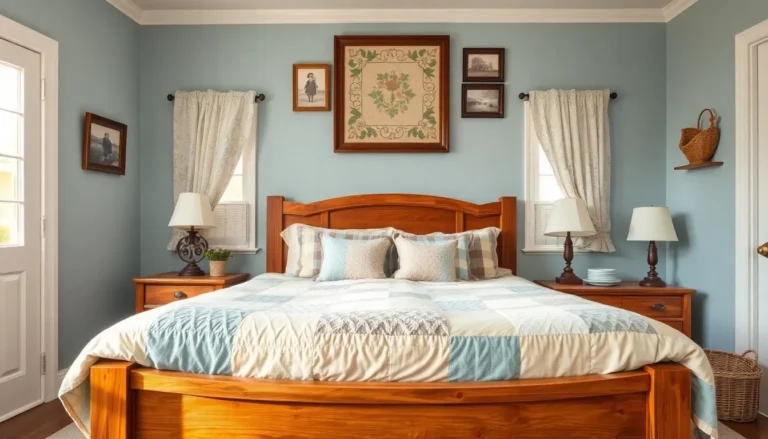Every kid deserves a kingdom where dreams come alive and adventures abound. Picture this: a majestic fortress filled with vibrant colors, comfy nooks, and maybe just a hint of magic. Designing a bedroom for kids is more than just a decorative challenge: it’s about crafting a space that reflects their personality, meets their needs, and, let’s be honest, keeps the chaos at bay. Today, we’re diving into the whimsical world of kids’ bedrooms. Buckle up, because it’s going to be a fun ride full of practical tips that will transform any ordinary room into an enchanting retreat.
Table of Contents
ToggleUnderstanding Kids’ Bedroom Needs

When it comes to kids’ bedrooms, understanding their unique needs is paramount. Children are not just tiny adults: they have dreams that can fill a room, from colorful fairy tales to the latest superheroes. Each child has distinct preferences that shape their environment.
For example, toddlers may benefit from bright, stimulating colors and playful designs, while pre-teens often prefer spaces that reflect their hobbies and aspirations. A dedicated area for play is essential, as it fosters creativity and keeps them engaged. As children grow, their needs change too. Making a bedroom adaptable ensures it can evolve with your child, accommodating their maturing tastes and expanding interests.
Parents should also consider the importance of organization. Introducing fun storage solutions, like colorful bins or themed bookshelves, can teach kids about keeping their space tidy while adding a playful touch.
In essence, a child’s bedroom should be a sanctuary, providing security and comfort while also sparking imagination.
Safety Considerations in Kids’ Bedrooms
Safety should always come first, particularly in a child’s space where curiosity knows no bounds. Start with the basics: secure heavy furniture like bookshelves to the wall to prevent tip-overs. Opt for rounded furniture edges to minimize the risk of injury during enthusiastic playdates.
Also, choose non-toxic paints and materials free from harmful chemicals to create a healthier environment. Window coverings should be cordless or have safety features to prevent accidents. Keep cords and small items out of reach to reduce choking hazards.
A night light can provide comfort during bedtime, making the room feel safer. Overall, creating a safe sanctuary piques a child’s sense of independence while putting parents’ minds at ease.
Designing Themed Bedrooms
When it comes to kids’ bedrooms, themes can unlock a treasure chest of creativity. Think about your child’s interests. Are they enchanted by outer space? Perhaps a galaxy-themed room with stars on the ceiling and rocket-shaped wall decals is in order. For little fans of fairy tales, whimsical castles or forest adventures can transport them to their dream worlds right from bedtime.
Paint is a powerful tool in setting the theme. Consider painting an accent wall with fun designs or using removable wallpaper for versatility. Furniture can match the theme too, like beds resembling racecars for aspiring drivers.
But, while themes can be enchanting, it’s important to balance them with timeless elements to ensure the room evolves as your child’s interests change. Removable decor options can aid in keeping it fresh without very costly.
Maximizing Space and Storage
Especially in smaller homes, maximizing space is crucial. Beds with built-in drawers under the mattress can serve dual purposes, providing both a cozy sleeping area and essential storage. Bunk beds are also a fantastic solution for siblings sharing a room, offering space-saving designs, they can transform any room into a cozy retreat.
Incorporate vertical space into your strategy. Tall bookshelves and wall-mounted storage units can keep toys, books, and games organized while freeing up floor space for play. Hooks for backpacks and coats can make cleanup a breeze.
Utilizing multi-functional furniture, like a desk that doubles as a nightstand, can give the room a clean look, while maximizing usability.
Incorporating Fun and Functionality
A great kids’ bedroom isn’t just about function: it should also be a space where fun reigns supreme. Incorporate bright colors and playful patterns that reflect your child’s personality. A chalkboard wall, for instance, offers creativity while serving as an art station.
Rugs with fun shapes can anchor the room while creating a cozy atmosphere. Create a reading nook with a beanbag and bookshelves to encourage your child’s love for learning.
Don’t forget about interactive elements. A climbing wall or a mini trampoline can make the room feel like a playground, seamlessly blending fun with functionality.
Choosing The Right Furniture
Selecting the right furniture for a kid’s bedroom is about more than just aesthetics: comfort and functionality should lead the way. Start with a bed that’s appropriate for their age and size. As children grow, adjustable beds that convert from toddler to twin can save costs while ensuring comfort.
Chairs should be kid-sized but ergonomic for study sessions or reading. Try opting for furniture made from durable materials that can withstand wear and tear, kids are marvelous at testing furniture limits.
Look for pieces that resonate with your child’s interests and play into their theme, whether it’s a princess vanity or a superhero desk. Durable and enjoyable choices combine to create a delightful environment.
Creating A Relaxing Sleep Environment
Sleep is essential for a child’s development, and a relaxing environment can make all the difference. Begin with soft lighting that isn’t too harsh: think about dimmable lamps or fairy lights to create an inviting atmosphere.
Opt for soothing colors like soft blues or pastel shades to promote calmness. Choosing cozy bedding that reflects their likes can increase the feeling of safety and comfort. Encourage a consistent bedtime routine, complete with stories or calming music, to help signal it’s time to wind down.
A peaceful bedroom can be a crucial part of a child’s lullaby suite. Don’t overlook the importance of establishing an environment conducive to restful sleep.





